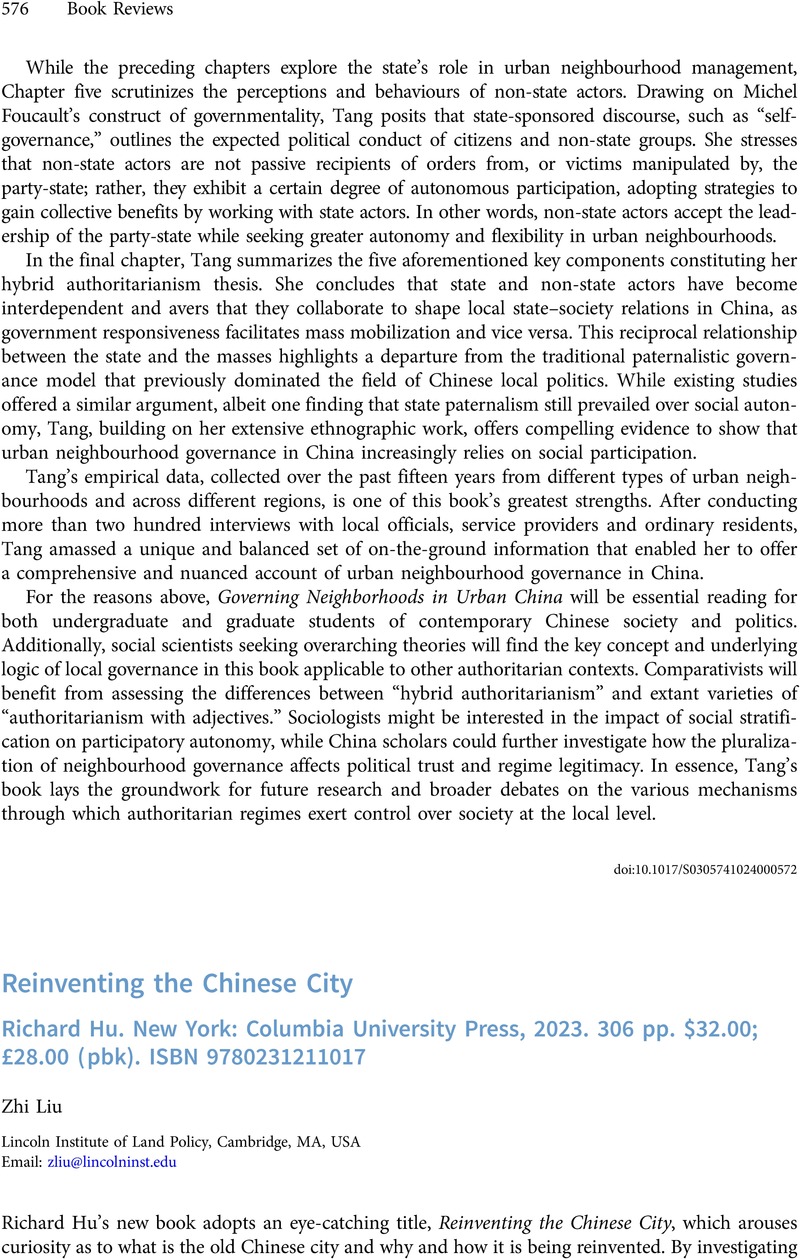No CrossRef data available.
Article contents
Reinventing the Chinese City Richard Hu. New York: Columbia University Press, 2023. 306 pp. $32.00; £28.00 (pbk). ISBN 9780231211017
Review products
Reinventing the Chinese City Richard Hu. New York: Columbia University Press, 2023. 306 pp. $32.00; £28.00 (pbk). ISBN 9780231211017
Published online by Cambridge University Press: 15 April 2024
Abstract
An abstract is not available for this content so a preview has been provided. Please use the Get access link above for information on how to access this content.

Information
- Type
- Book Review
- Information
- Copyright
- Copyright © The Author(s), 2024. Published by Cambridge University Press on behalf of SOAS University of London


